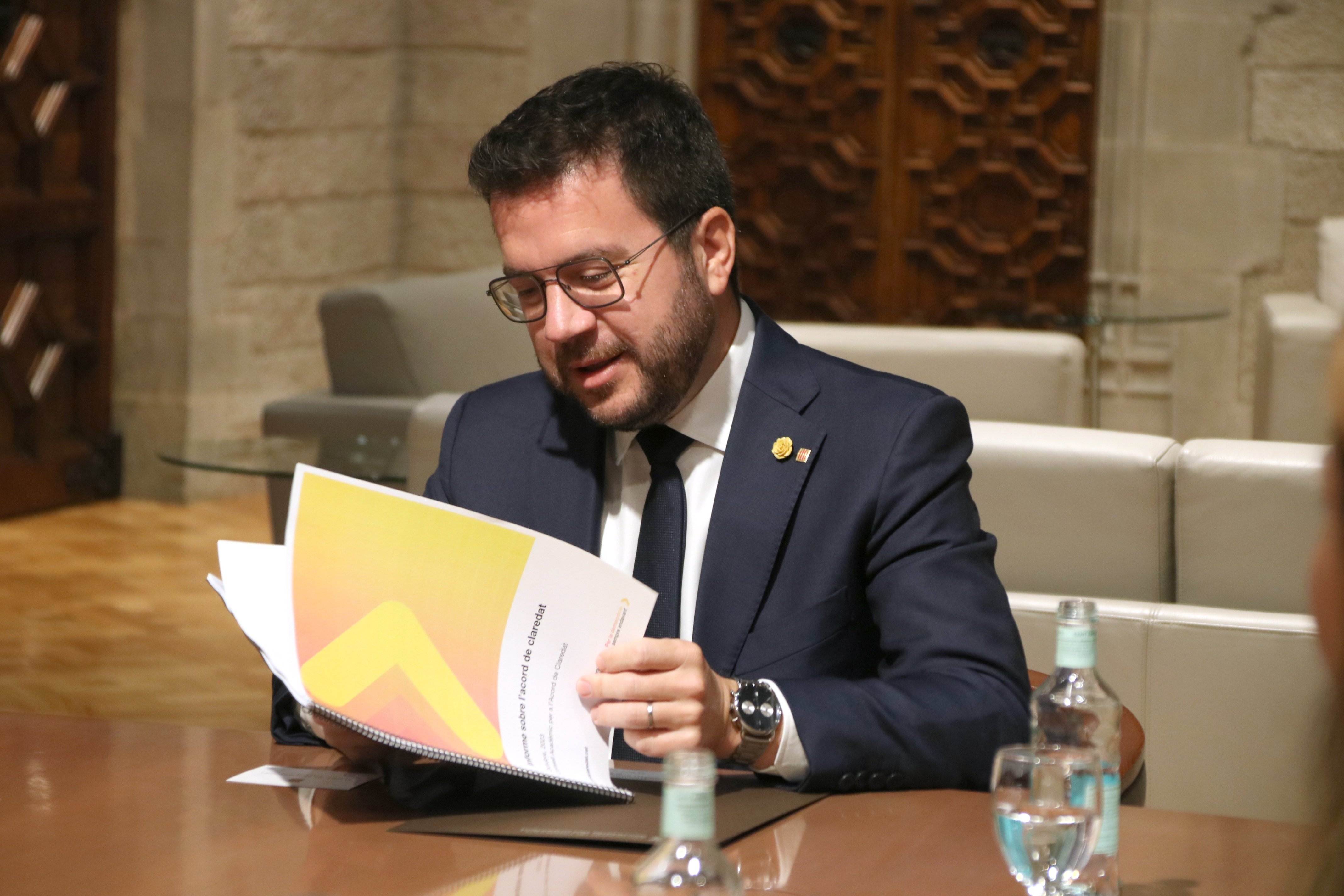"A referendum on the independence of Catalonia held among the citizens of Catalonia". This is the method that the Catalan government is opting for to resolve the conflict between Catalonia and the Spanish state, as announced by the Catalan president, Pere Aragonès, after a special cabinet meeting held this Monday to analyse the report drawn up by a group of experts on the Clarity Agreement he proposes. The government has chosen the first of the proposals put forward in the report, an "initial referendum" that would set in motion the process of independence in Catalonia, which would then be rolled out. "A Scottish-style referendum in which citizens can say 'yes' or 'no' to independence and, from here, begin the path that should lead to the implementation of the result", as the president set out, insisting that the will is for such a referendum to be agreed with the state.
Although this proposal, first presented last September, now reaches a new stage at the same time as negotiations are underway for the investiture of Pedro Sánchez as Spanish prime minister, Aragonès detaches this proposal from the vote on forming a new government in Madrid. "The political parties have already put their conditions on the table, today we are not presenting any new conditions", he replied.
The proposal chosen by the Catalan government appears in the report as "initial referendum in the sub-state territory". "This type of proposal would consist, for example, of consulting the citizens of Catalonia on whether or not Parliament should initiate a process of constitutional reform that could contemplate independence and/or a new accommodation within the Spanish state," explains the text.
This proposal is one of five different types of referendum presented in the report: two are limited to the citizens of Catalonia, while three others also include the citizens of the rest of the Spanish state. Referendums could be at the start of negotiations or at the time of ratification of results, each of them consulting the citizens of Catalonia or the Spanish state as a whole. The fifth possibility would be a double referendum, in both Catalonia and Spain.
IEA report and round table
In a media appearance at the Palau de la Generalitat, Aragonès announced this Monday that he will commission a report from the public research group the Institute of Self-Government Studies (IEA) to outline specific legal paths to carry out the proposal.
Also, taking into account the need to reach consensus on the initiative, he explained that once the debate on the investiture of the Spanish PM is over, he will call together a round table of the parliamentary parties to explain the conclusions of the report and defend his government's proposal.
Referendum in the State
Aragonès admitted that the implementation of the result, as highlighted in the experts' report, may involve ways that are not the option of his government - such as consultation with the rest of the state. In fact, the experts' report itself makes it clear that one of the arguments put forward against this proposal is that "the Constitution cannot empower the holding of referendums whose object is the eventual secession of a territory from the state". This would require a constitutional reform and the mandatory ratification referendum throughout the state.
In this regard, the president affirms that the fundamental thing is whether there is a will to agree or not, that, first of all, the citizens of Catalonia would be consulted and then the legal and constitutional ways to implement it.
..

